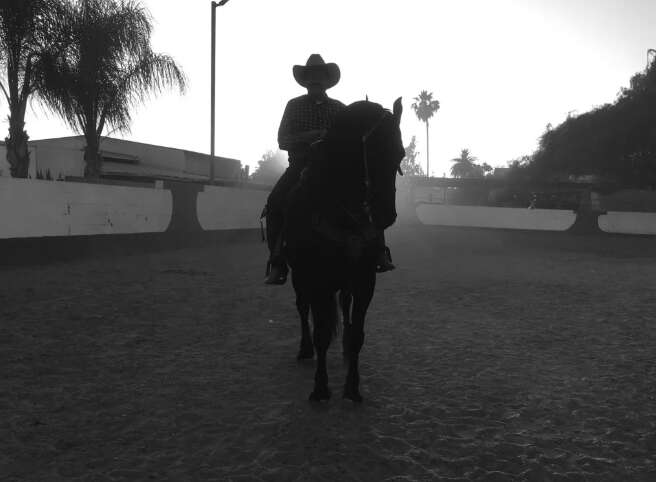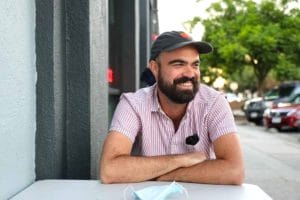Essayist Considers the Power of Photos in Preserving Local History

“With the connection to the horses, the specific natural history of the San Gabriel Valley, and continual exploitation of the community’s health,” writes doctoral candidate Daniel Talamantes, “Jesús Romo’s photographs convey that we are indelibly intertwined with our environment.”
Talamantes chronicled the photos and words of activist and photographer Jesús Romo in “Interspecies Assemblage: The San Gabriel Valley through the lens of Jesús Romo,” an essay recently published by BOOM California.
The black-and-white images that inspired Talamantes’s words seem dated to a long ago time, but in fact Romo’s photographs capture overlooked aspects of the way life is being lived now in the San Gabriel Valley, just east of Los Angeles.
Talamantes, who is pursuing a path toward environmental history, ethnography, and environmental justice activism, drew from the memories preserved in Romo’s pictures depicting life in the San Gabriel Valley to focus in his essay on the region’s culture, identity, economic struggles, disrupting of binary gender models, and more.

He ruminates on landscapes gnawed at (and eventually devoured) by development, on Mexican and Latinx communities, on “how vaqueros or vaqueras have gained success in claiming public space and reclaiming Mexican presence in the San Gabriel Valley.”
At one point, as Talamantes considers gender representation and digital images, he calls upon the research of historian Susan Stryker to make his comparisons, writing that “pixel by pixel, bit by bit, the bodily stylings through clothing and accessories, a person’s behaviors and interactions, their movements, dancing, songs, vocal utterances, and expressions add up to the mix of gender, sexuality, class, race, ethnicity, and nationality identifications present in vaquerx lifestyles.”
BOOM California is an online publication co-edited by CGU Assistant Professor of History Romeo Guzmán, a pioneering scholar in the field of “public history.” Public historians seek to recover the voices, experiences, and testimonies of communities often overlooked (and swept aside) in conventional “official” versions of history.
Guzmán’s role in the publication has created another exciting venue for emerging scholars. It is another example of the way that faculty at CGU create opportunities for students to make substantial contributions to their scholarly field while still in the classroom.
- Read more of Daniel Talamantes’s essay in BOOM California